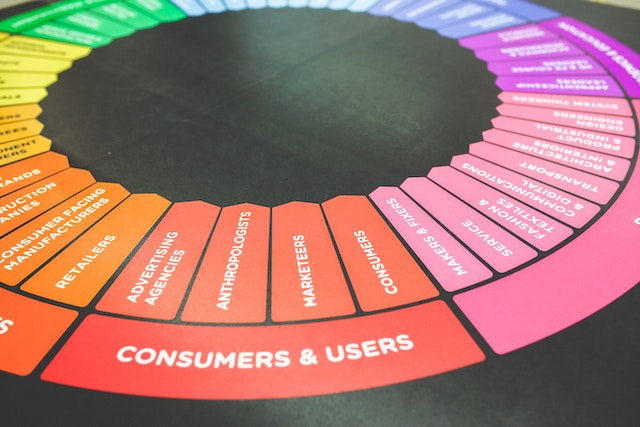Running a business providing a new product or service that has never existed before is a very risky move. However, there’s a big opportunity to make huge money for anyone who dares to pioneer.
Businesses that sell new products or services will have to run effective demand-generation campaigns in order to become successful. What about lead generation? Is it different from demand generation?
Despite having the same ultimate goal which is selling a product, demand generation and lead generation are two different tasks that business owners will need to clearly understand to conduct them properly for optimal results.
- Click here to preview verified prospect lists
What is demand generation?
Demand generation is a series of marketing activities that are carried out across different channels to make one or several targeted audiences realize that they need your new product or service.
Demand generation mainly revolves around highlighting an issue and educating the targeted audiences on how your product or service can help them mitigate or resolve it.
Demand generation is a very challenging task because it usually doesn’t generate much interaction from the targeted audiences and is usually expensive to produce a good result.
Demand generation vs lead generation
People often confuse these two tasks because sometimes, several marketing tactics can be used for both, and their goals are pretty much the same.
Without knowing clearly the difference between the two can result in them not being conducted properly and thus, lead to poor performance of your company’s marketing effort and investment.
Demand generation’s aim is to make people realize an issue and motivate them to use a product or service to solve it, while lead generation is educating and motivating people to pick a certain product or service over the ones that are created by competitors.
- Click here to preview verified prospect lists
Lead generation is an effort that happens after demand generation. However, for many companies, especially small ones, these two efforts are usually merged into one.
It depends on a business’ budget, resources, niche and product to decide whether or not it will need to run the two tasks separately to achieve effectiveness in performance and cost.
Demand generation step-by-step process
1. Planning
Running any marketing campaigns nowadays will cost you time, effort, and money. So, it’s much better to plan well before you actually put in the work and investment.
Depending on your business’ niche, budget, and product, you may want to focus on certain channels to yield the best results. Some of the most popular channels for demand generation are sponsored posts and ads.
Different platforms offer different pricings and it can be more expensive to run ads on one platform than others. For example, you may find Linkedin ads are costlier than Reddit ads while being less effective at generating your desired goals.
Planning well also helps bring better performance since all campaigns are in good coordination so that they can complement or boost one another effectiveness.
2. Creating an online presence
When you’re happy with your plan, it’s time to create your presence on the Internet. This stage includes creating the right content and targeting the right audiences.
Pay close attention to what you’re delivering because you certainly don’t want to leave your audiences with a bad image of your business. Check every detail in your content, from the punctuation, and spelling to grammar, everything got to be perfect, why?
- Click here to preview verified prospect lists
When you’re a new brand, it takes much more time to gain people’s trust. Imagine you destroyed your credibility in the first place, it will be very hard to build it back.
When the content is right, it’s time to run your demand generation campaigns on platforms that you think fit best for your business because different channels and platforms can provide different values.
-
SEO
SEO is quite broad and many SEO tactics can be used for demand generation.
When running a business that provides a new product or service, you will almost certainly have to write a lot of detailed posts to educate people about your product and how it can solve their issues to make life easier for them.
Your posts will be the primary learning resource for your potential clients since you’re the only one that offers the new product.
SEO is very challenging for new businesses, therefore, your posts will not be able to rank well on search engines and get traffic anytime soon. However, there’s an effective way to promote your posts for demand generation, it’s sponsored posts.
Sponsored posts are paid posts that are published on sites whose audiences can relate best to what you have to offer. Picking the right sites for your sponsored posts is crucial. They must be relevant to your niche and have good traffic and authority while being affordable.
By doing this, your content will certainly reach more readers since the sites that published your posts are established and already have good authority. Moreover, this tactic will also help give your site a better rank on search engines over time.
-
Paid ads
When it comes to demand generation, paid ads are almost inevitable. Depending on your product and niche, some platforms will be better than others.
Let’s say you’re selling food, Facebook, Instagram and Youtube may be better places than Linkedin to advertise your product. There are some tips for businesses to advertise effectively:
- Your ad content should be highlighting the issue that your audiences are facing and how your products can help them with the issue
- The ad content must be compelling enough to capture the audience’s attention while being concise and easy to understand.
- Target the right audiences for optimal performance.
- Create different ads to test them against one another to see which ad performs the best.
- Take the time to analyze your ads’ performance stats and optimize them accordingly.
-
Cold emailing
Cold emailing is one of the most popular ways to generate demand effectively. Cold emailing is simply sending a series of emails to your prospects that present the highest probability of becoming your leads or clients.
While sending cold emails on a small scale is pretty straightforward and easy, the most difficult and important part is finding the best prospects.
- Click here to preview verified prospect lists
There are several strategies to generate prospects effectively, but the fastest and most affordable way is to use a reliable lead database.
A good lead database like Limeleads makes it super easy for businesses to generate excellent prospects with just a few clicks.
Limeleads is among the very few best lead databases on the Internet that could help you find very specific prospects easily, down to where they live, their job titles, companies, social media profiles, etc. Our unbeatable offers are as follows:
- Powerful search filters to help you find very specific prospects.
- 2 layers of real-time email verification to ensure data quality
- Free trials, no credit card is required
- Credit refunds for bounced emails
- Expert support available any day of the week.
- A $79 detailed cold emailing course with expert interviews and worksheets free of charge
- Generous discounts for first-time clients.
Simply complete our few-click signup process and get your free trials with us. We ensure you’ll get a risk-free experience.

3. Ensure your audiences get instant support
Providing fast support response is one of the most important factors for a successful demand generation campaign because when you’re selling a completely new product to address a specific issue, it’s usually much harder for your audiences to understand, therefore, they will need an answer for many questions that come to their mind.
Make sure you have enough manpower to quickly support your leads (people that are interested in your products) when they contact you via messages or emails.
Excellent support will also help you build trust more easily and help make your product and brand linger in the mind of your audiences.
4. Follow-up
Proper following up cannot be ignored. Make sure you follow up with everyone that contacted you before with relevant messages.
One of the best tactics to follow up with your leads is to reach back and ask them if they have any other questions while offering them an interesting promotion at the same time.
You may need several follow-ups to encourage your leads to take action, however, don’t make your follow-ups spammy by sending too many emails too frequently.
Automation can help well here, but we recommend taking the time to personalize your follow-ups as much as possible since you’re a new brand providing a new product, and you’re probably not going to generate a lot of leads.
- Click here to preview verified prospect lists
Most common mistakes when running demand generation campaigns
Demand generation campaigns play a vital role in stimulating awareness and interest in your company’s offerings. However, businesses often stumble upon common pitfalls below when executing these campaigns:
- Absence of a Defined Strategy: Without a concrete strategy, your campaign might not achieve its desired impact. It’s crucial to establish clear objectives, identify your target audience, and devise a plan to engage that audience.
- Inadequate Understanding of the Target Audience: A significant misstep is not thoroughly comprehending your target audience. This can lead to ineffective communication and squandered marketing resources.
- Underestimating the Role of Content: Content is the cornerstone of demand generation. Top-notch, pertinent content is essential for attracting and engaging your target audience.
- Ignoring Lead Nurturing: Not all leads are prepared to make a purchase immediately. Overlooking the nurturing of leads through the sales funnel is a common error that can result in missed opportunities.
- Failure to Measure Results: Without gauging the outcomes of your campaign, you won’t discern what’s effective and what’s not. It’s vital to monitor key metrics and tweak your strategy as required.
- Excessive Dependence on a Single Channel: While it’s crucial to concentrate on the most effective channels, an over-reliance on one channel can restrict your reach. It’s important to adopt a multi-channel approach.
By steering clear of these common pitfalls, you can execute more effective demand generation campaigns that drive meaningful results for your enterprise.
Conclusion
Running a business that offers a completely new solution to an existing issue is extremely challenging. It’s a very high-risk way to do business, however, the reward can be immense.
Effective demand-generation campaigns are vital for these businesses. The more effectively your business generates demand the better of a chance that your business will survive, grow and lead the market.
- Click here to preview verified prospect lists
It’s also important to scale your demand generation effort when necessary because you don’t want your competitors to catch up and take away a large chunk or dominate the market that you pioneer.
We hope this guide serves as a useful resource to put your business’ demand generation campaigns on the right path. If you need further assistance, feel free to contact us at [email protected] or via our live chat support.
